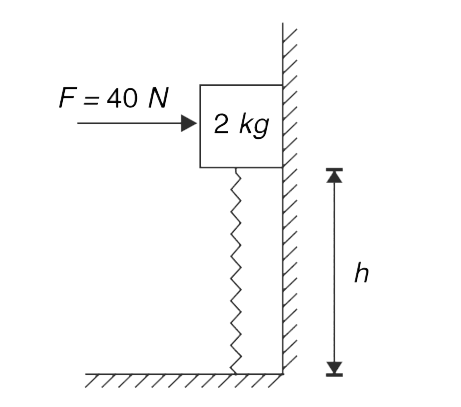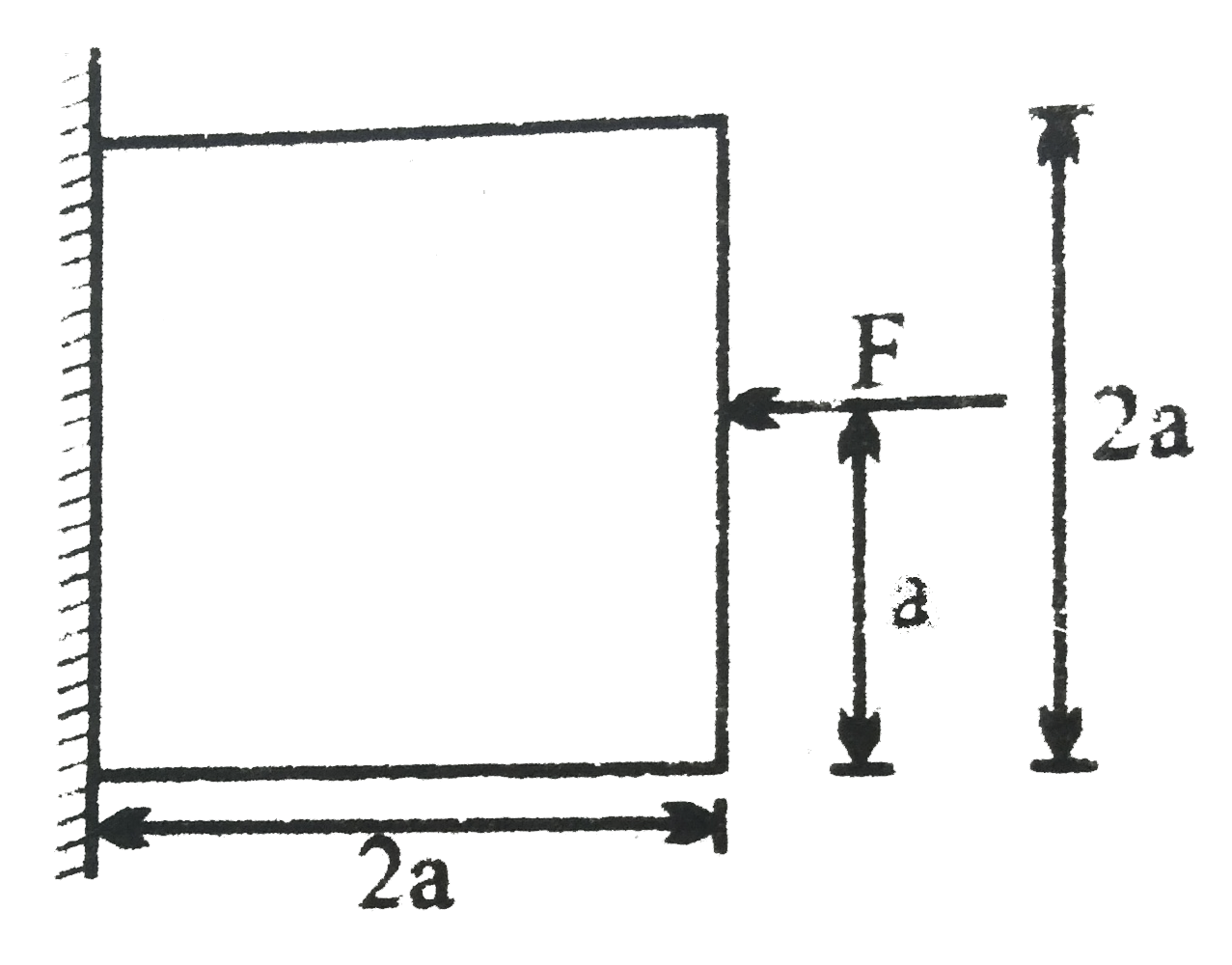
An object of 2 kg is held pressed, against a vertical wall with the help of a horizontal force (see fig.). The body is about to full down. Which force stopping the object to fall down and what is its magnitude?
Static friction, 10N
Static friction, 15N
Static friction, 20 N
Kinetic friction, 20 N
The correct Answer is:C
Step by step video, text & image solution for An object of 2 kg is held pressed, against a vertical wall with the help of a horizontal force (see fig.). The body is about to full down. Which force stopping the object to fall down and what is its magnitude? by Physics experts to help you in doubts & scoring excellent marks in Class 12 exams.
Updated on:21/07/2023Similar Questions
A block of mass 2 kg is pressed against a rigid vertical wall by a horizontal force of 100 N. If co-efficient of static and kinetic friction are each equal to 0.3 then find the magnitude and direction of frictional force on the block.

View SolutionA block of mass 2 kg is pushed against a rough vertical wall with a force os 40 N. Coefficient of static friction being 05. Another horizontal force is 15 N, is applied on the block in a direction paralle to the wall. Will the block move? If yes in which direction? If no, find the frictional force exerted by the wall on the block.
View Solution
Knowledge Check
A block weighs W is held against a vertical wall by applying a horizontal force F. The minimum value of F needed to hold the block is
Aless tha WBEqual to WCGreater than WDData is insufficientA block of weight W is held against a vertical wall by applying a horizontal force of 75N . The surface3 of the wall is rough. Now (conside μ<1)
AW<75NBW=75NCW>75NDNone of theseA block weighing w is held against a vertical wall be pressing horizontally with a force F. Then, F needed to hold the block is
 Aequal to wBequal to wμ onlyCgreater than wμ onlyDgreater than or equal to wμ
Aequal to wBequal to wμ onlyCgreater than wμ onlyDgreater than or equal to wμ
(i) In the arrangement shown in the figure the coefficient of friction between the 2 kg block and the vertical wall is μ=0.5. A constant horizontal force of 40 N keeps the block pressed against the wall. The spring has a natural length of 1.0 m and its force constant is k=400Nm–1. What should be the height h of the block above the horizontal floor for it to be in equilibrium. The spring is not tied to the block.

(ii) A block of mass M is pressed against a rough vertical wall by applying a force F making an angle of θ with horizontal (as shown in figure). Coefficient of friction between the wall and the block is μ=0.75.

(a) If F = 2 Mg, find the range of values of θ so that the block does not slide
[Take tan37∘=0.75,sin24∘=0.4]
(b) Find the maximum value of θ above which equilibrium is not possible for any magnitude of force F.
View SolutionA block of mass m is held fixed against a wall by a applying a horizontal force F. Which of the following option is incorrect :
 .
.
View SolutionTwo blocks A and B of masses 2kg and 8kg respectively are kept in contact and pressed against a roguh vertical wall by applying a horizontal force F=50N as shown, The frictional force acting between the two blocks is

View SolutionA block of mass 1 kg is held at rest against a rough vertical surface by pushing by a force F horizontally. The coefficient of friction is 0.5. When

View SolutionA rectangular block is held against a vertical wall by applying a force of 200N normal to the wall. If the frictional froce just prevents the block from sliding down the wall, what is the mass of the block? (The coefficient of static friction between the block and the wall is 0.49)
View Solution
